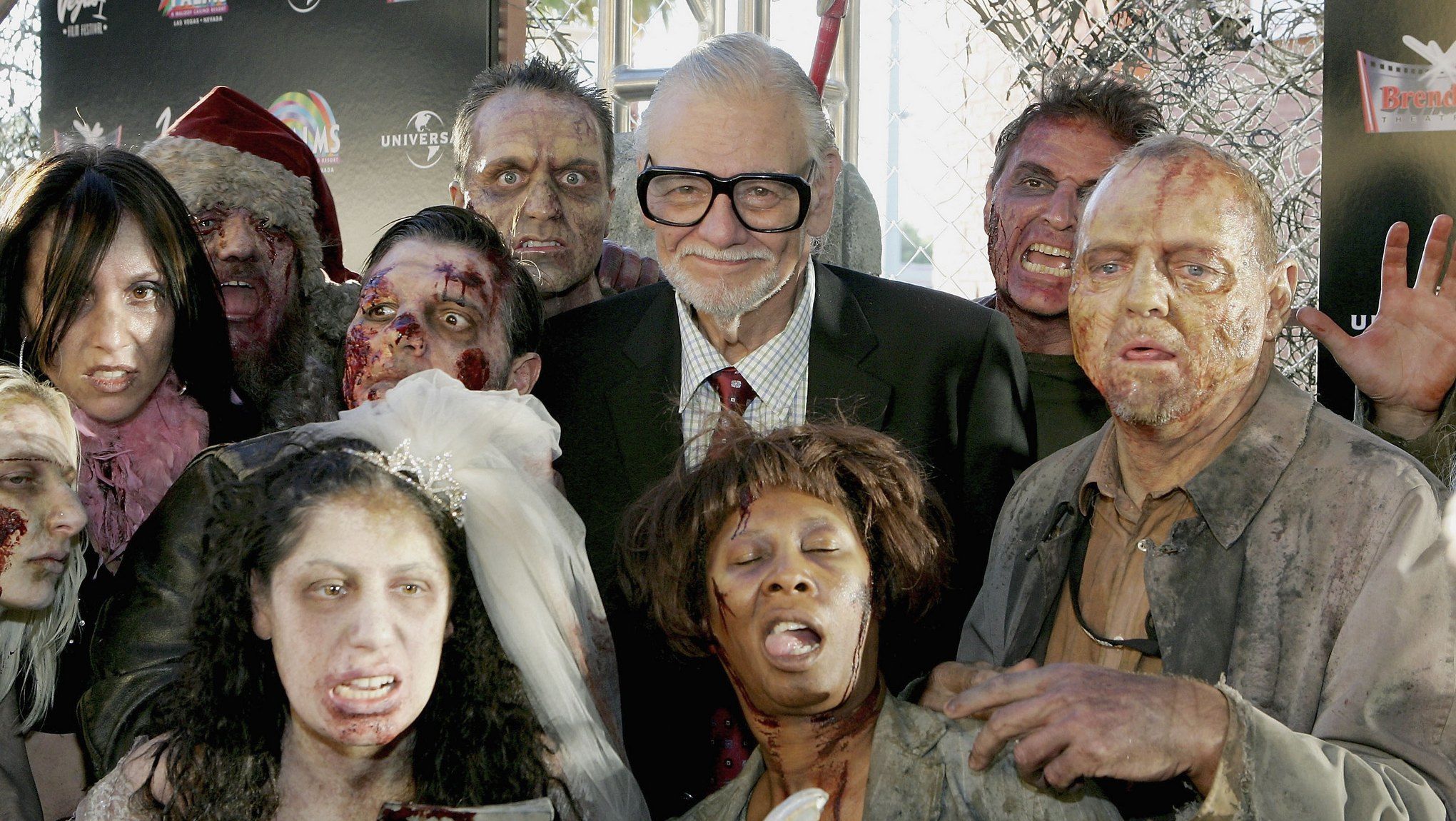Create a free profile to get unlimited access to exclusive videos, sweepstakes, and more!
Exclusive: George A. Romero left ‘a lot of material’ for unfinished zombie novel, co-author says

A novel started by legendary filmmaker George A. Romero before his death in 2017 has now been completed for publication in 2020, and the author tasked with finishing the job says that the legendary filmmaker left behind plenty to work with.
Daniel Kraus, who penned the novelization of Guillermo Del Toro's The Shape of Water and Trollhunters, as well as the Death and Life of Zebulon Finch series, was recruited to finish the book as Romero's co-author, and he took to social media to announce both its completion and a June 2020 publication date:
"He left a lot of material, as well as a roadmap of sorts of where he was going, but that still left hundreds of pages I had to tackle on my own," Kraus tells SYFY WIRE via email when asked how much he had to do to complete the book, called The Living Dead (it was first announced last year by publisher Tor Books). "I've written long novels before, so the scale of it didn't worry me. If anything worried me, it was the responsibility of midwifing this ambitious idea of his. But I've been a student of Romero since I was 5 or 6 years old. I've been training for this all my life."
Romero, who died in July 2017 at the age of 77, is of course the father of the modern screen zombie, thanks to his landmark directorial efforts Night of the Living Dead, Dawn of the Dead, and others. Romero made a total of six films set in his post-zombie apocalypse world, but The Living Dead was going to be his first attempt to transfer his mythology to the page.
"I studied his films relentlessly, and read every script, interview, and scholarly analysis of his work I could find," explains Kraus about matching his writing style to that of Romero. "I also did a fair amount of original research, not only interviewing people close to him or were experts in his work, but also managing to dig up material George created [that] no one has seen for a very long time, all of which was hugely helpful. But I also saturated myself in the things George loved. I studied his favorite movies, listened to his favorite music, and so forth. I was always asking myself the same question: What was he responding to in this work of art, and how can I use that to help finish building narrative or thematic bridges he'd begun?"
The official synopsis for the book indicates that it follows several characters, including an assistant medical examiner, a teenager living in a trailer park, a cable news anchor, and the captain of a nuclear submarine as they navigate the rise of the flesh-eating dead: "Spread across three separate time periods and combining Romero’s biting social commentary with Kraus’ gift for the beautiful and grotesque, the book rockets forward as the zombie plague explodes, endures, and finally, in a shocking final act, begins to radically change."
Romero's movies were almost always hampered by low budgets; in fact, he had to rewrite all of 1985's Day of the Dead when the budget for that movie got sliced down from $6 million to $3 million. It should be fascinating to see what he has managed to do on the page — with Kraus' help — where the only restriction was the scope of his own imagination.
"You have to remember, though he loved his zombie movies and the career they gave him, he also felt penned in by them," adds Kraus about what makes Romero's work in the genre resonate to this day. "He hardly ever watched horror movies. Counter-intuitively, this is why his horror movies stand out. He had to use [the] vehicle of horror to tackle issues that often fall outside genre concerns. This is how you make a George Romero, or a David Cronenberg, or an Anna Biller, or a Jordan Peele."
In addition to the book, the late director apparently left behind a boatload of screenplays. While those might not actually make it to the screen, there is also an unreleased Romero movie from the 1970s in the vaults called The Amusement Park that Kraus himself has seen and which may one day get released. Between all that and, now, The Living Dead, George A. Romero's vision lives on.














